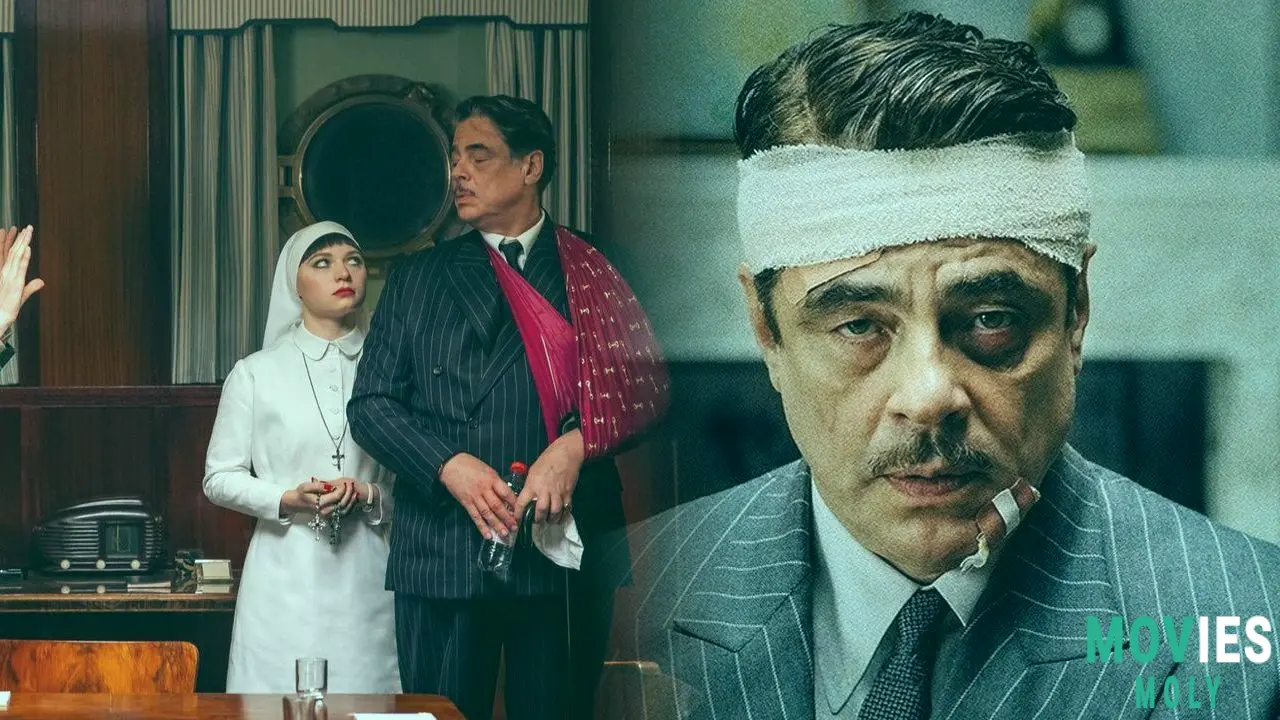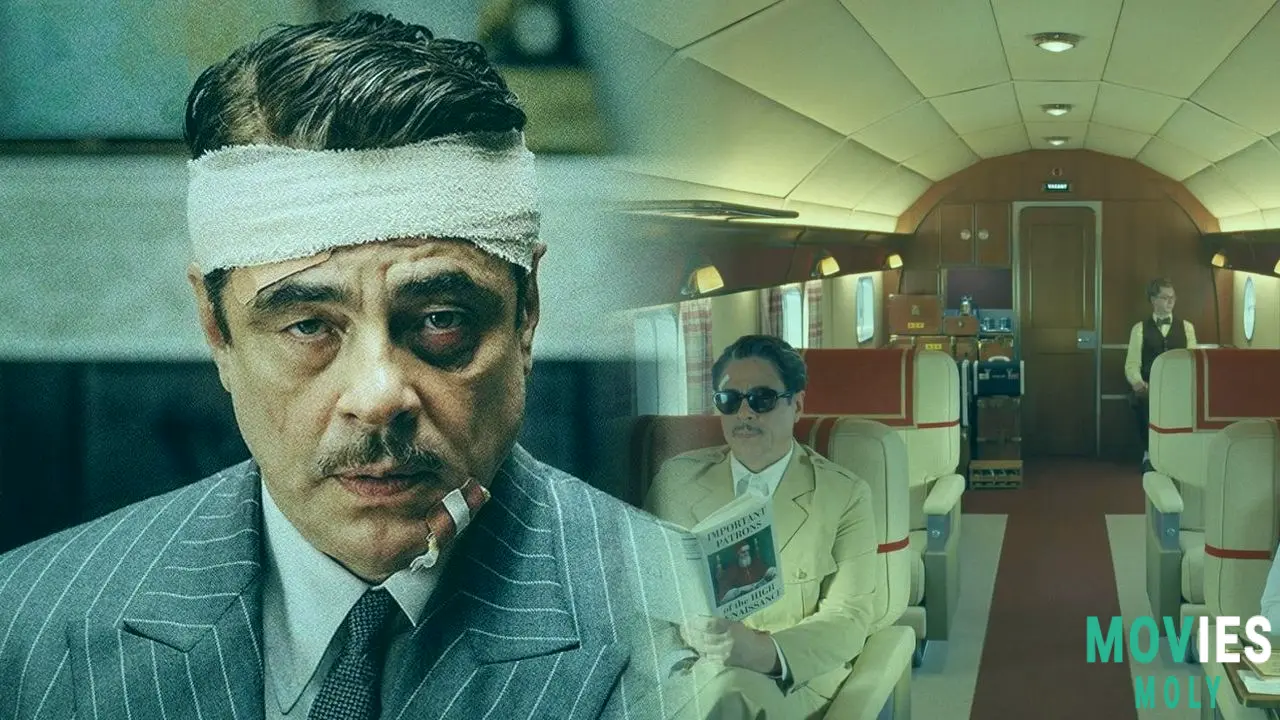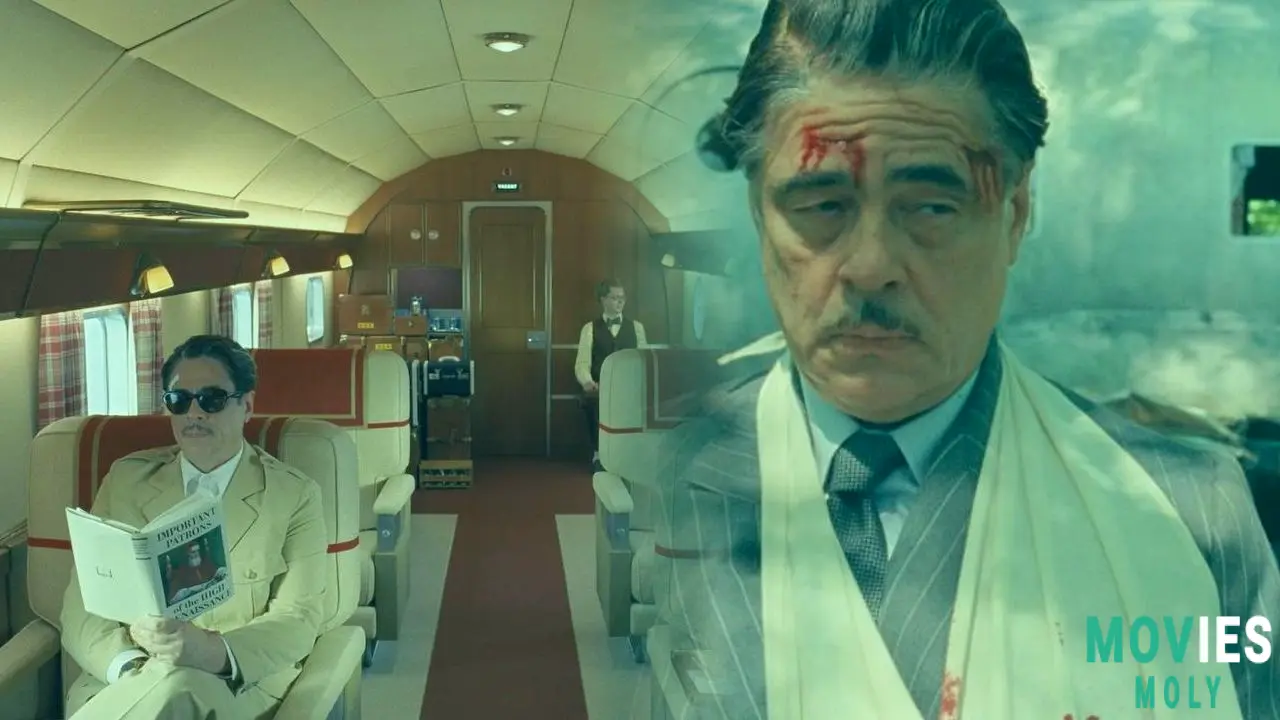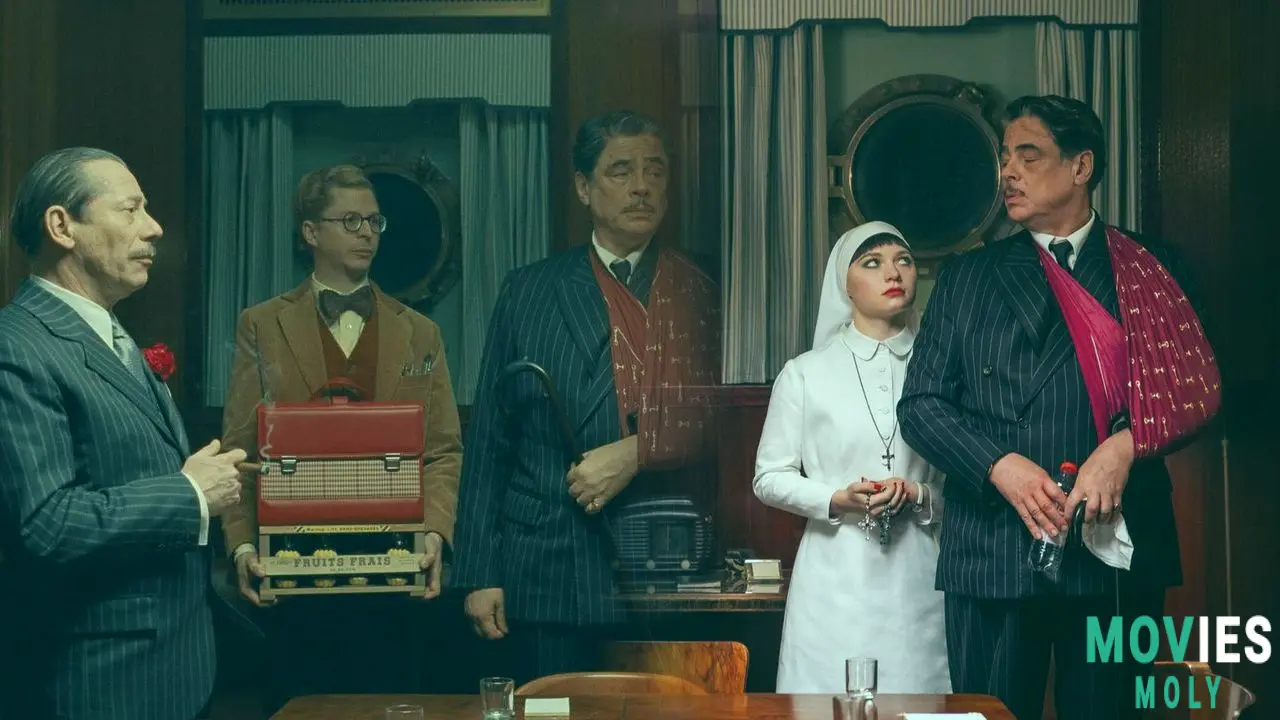Michael Cera has been on a global tour for his new movie The Phoenician Scheme. This film is his first time starring in a Wes Anderson movie. Jackie Chan has also been on his own tour for Karate Kid: Legends. Recently, the two actors ended up at the same press stop, BBC Radio 2. Cera later told NME that Chan had no idea who he was. I can just imagine how awkward that must have felt.
Cera explained that a photographer asked if he knew Jackie Chan. Cera did not so she said "come meet him." That was it. When Cera met him though Chan seemed confused. He was like "Who is this person? What's going on?" They took a picture. Cera felt Chan thought he was a competition winner. He recalled Chan saying "Ok, let's do a picture real quick. Come on." Cera noted it was not rude, but he felt like he was bothering Chan during his private time with his team before going on the radio. Cera added "What am I doing here?" He did say everyone was very nice and he got to meet Jackie. This kind of unexpected celebrity meeting perfectly fits the slightly off-kilter world of a Wes Anderson movie.
Both The Phoenician Scheme and Karate Kid: Legends came out on May 30. However, Cera's film is in limited release first and will expand across the country on June 6. Cera went to the film's world premiere at the Cannes Film Festival. There he talked about making his first Wes Anderson movie. He seems to truly love the experience of working with Anderson.
Michael Cera Describes The Unique And Fun Atmosphere On A Wes Anderson Movie SetDiscover Why Actors Are So Eager To Be A Part Of The Director's Distinctive Cinematic World
Michael Cera shared his thoughts on working with Wes Anderson saying "It's so specific and very exacting, but so much fun. Such a spirit of fun, all the time." He felt it never had a negative or pressured vibe. It always felt like they were having a great time, even though they were working hard. He said it always felt very positive and he totally loved the movie while they were making it. This sounds like an ideal film set for any actor. It shows why so many big names want to work with Anderson.
Cera also noted that Anderson has the freedom to do as many takes as he needs. Around twenty takes in, he felt they had what they needed. Then Anderson would say "let's try something else and keep experimenting just for the sake of it." This is a nice way to work. It makes you feel like everything after that is extra good. Cera believes there are small happy accidents in the movie because of this approach. He hopes to keep working with Anderson any chance he gets. This kind of creative freedom really allows for unexpected moments to make it into the final film.
Wes Anderson has a very distinct style that stands out in Hollywood. He uses careful details and a unique look that makes every big actor want to be in his next film. The Phoenician Scheme is a good example of this. It brings back many actors who have worked with Anderson before. These include Tom Hanks, Jeffrey Wright, and Scarlett Johansson. It also adds new faces to his world. This blend of familiar favorites and new talent keeps his films feeling fresh while holding onto the style people love.
The Phoenician Scheme Explores A Quirky Narrative Centered On A Ruthless Business Tycoon

Unpack The Story Of Zsa-Zsa Korda's Shady Dealings And His Unexpected Art Collection
Benicio del Toro leads the new film. He plays Zsa-Zsa Korda, a harsh but charming European business tycoon. Anderson describes Korda as having "very little obligation to honor the truth." Korda wants to make his own lasting impact without much concern for his ten children, or the people and land he wants to exploit. He chases many deals to build his dream project, the Korda Land and Sea Phoenician Infrastructure Scheme. This focus on a flawed, ambitious character is a common thread in Anderson's work, often exploring complex family relationships.
A surprising detail about Korda's palazzo, where he lives with his nine sons, is his art collection. It is arranged so randomly that most of the paintings are not even hanging on the walls. This home was partly based on the real home of art collector Calouste Gulbenkian. He was accused of trying to avoid taxes. This messy collection suggests Korda does not truly care for his art. It acts more as decoration for his shady business and strained family life. This attitude brings to mind how some wealthy people treat their art as just another way to show off their money.
The film features some actual famous artworks. A 17th-century still life by Floris Gerritsz van Schooten shows a fatty roast. A 1942 René Magritte painting has a house plant with birds for leaves. There is also an 1889 portrait by Pierre-Auguste Renoir of the artist’s nephew. Korda’s estranged daughter, Liesl (Mia Threapleton), a nun, sleeps under the Renoir without even noticing it. This indifference to real masterpieces is a subtle jab at Korda's character. He owns great art but does not value it properly. This is a common theme in Anderson’s films, where appearances often hide deeper meanings.
Anderson is known for making sets that feel like art installations themselves. He even designed a café for a museum in Milan. The artworks in The Phoenician Scheme look like props. One might think they are fakes, especially since Anderson made up some art history for his 2021 film The French Dispatch. But here is the trick: some of them are real. The Renoir is real. It used to belong to actress Greta Garbo. The Magritte is also real and was once owned by a collector. The van Schooten is real and owned by a German museum. Other works, like a painting by Peter Paul Rubens, are copies. The fact that it is hard for viewers to tell which are real and which are not is part of the point. Korda cannot tell the difference between a good artwork and a fake, even as he reads books about art history during his wild adventures. He does not know the true worth of a valuable item, just as he does not know the worth of Liesl, whom he wants to name as his heir.
Bill Murray's Cameo Adds A Special Touch And Sums Up His Roles In Wes Anderson's Movies

How A Small Appearance From A Familiar Face Can Carry Significant Meaning In The Film
In The Phoenician Scheme, Korda has visions of the afterlife. These come from the many times people have tried to kill him. It is unclear if these visions are real or just in his head. But they show Korda and the audience the mistakes he has made and what he could lose. In one scene, Korda meets God, played by Bill Murray. This role feels like the ultimate version of all of Murray's roles in Anderson's past movies.
This appearance works well because of the characters Murray has played for Anderson. He has sometimes played problematic fathers, like in The Life Aquatic. Even in his smaller roles, he often has an impact on the other characters and the film. For example, Clive Badger in Fantastic Mr. Fox gives advice. Herman Blume offers a "cool dad" alternative in Rushmore. M. Ivan helps Gustave in The Grand Budapest Hotel. No matter what his role is, Murray's presence in Anderson's films often has effects that extend through the whole movie. This adds to the feeling that he is a guiding presence, even if sometimes a complicated one.
Wes Anderson also sees Bill Murray as a close family member. Anderson once said that Murray supported him from the start. He said Murray is "part of my family" and his daughter's godfather. Murray even baptized his daughter. With all these connections, it makes sense that Bill Murray would play God in Anderson's world. In The Phoenician Scheme, Murray's God gives Korda confusing advice. Then he makes Korda play a guessing game, which Korda loses. Murray as God perfectly mixes Anderson's style: smarts and warmth, with a formal outside that gives way to humor. Casting Murray as God is a humorous choice on its own. It feels like Anderson's way of showing Murray's blend of sarcasm and mystery. Murray will surely keep working with Anderson, but this role might be his most important yet.
The Phoenician Scheme's Cast And What Lies Ahead For Wes Anderson's Artistic Vision

Examining The Talent Behind The Film And The Director's Continued Influence On Hollywood
The latest Wes Anderson film has a strong cast. Besides Benicio del Toro and Michael Cera, it includes Mia Threapleton, Tom Hanks, Jeffrey Wright, Scarlett Johansson, Bryan Cranston, and Riz Ahmed. This list of names shows how appealing working with Anderson is for actors. Mia Threapleton, who plays Liesl, is a new face to the Anderson group. Her role was not written with her in mind, unlike most of Anderson's characters. She got the part after months of auditions. She heard the news while on a train and did not believe her agent at first. She was so surprised she cried.
Del Toro thinks Threapleton's screen test was what made her stand out. She was inventive and thought on her feet. She even made part of a nun costume from a napkin on a lunch tray. This shows the kind of natural talent that Anderson seems to look for. Being in a Wes Anderson film is a dream for many actors. Threapleton said she still cannot believe she achieved it so early in her acting career. This shows the lasting appeal of Anderson's films and the special place they hold for actors.
The Phoenician Scheme was partly inspired by Anderson's father-in-law, a Lebanese businessman. This adds a personal touch to the film, showing how real-life can inspire such unique stories. The movie is set in the 1950s. It continues Anderson's tradition of creating distinct worlds and characters that are both funny and thought-provoking. I think The Phoenician Scheme will be another memorable addition to Wes Anderson's impressive collection of films. It truly shows his unique way of telling stories, full of humor, art, and complex characters.




